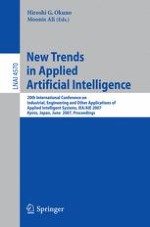“The true sign of intelligence is not knowledge but imagination.” Albert Einstein Applied arti?cial intelligence researchers have been focusing on developing and employing methods and systems to solve real-life problems in all areas incl- ing engineering, science, industry, automation & robotics, business & ?nance, th cyberspace, and man–machine interactions. The 20 International Conference on Industrial, Engineering and Other Applications of Applied Intelligent S- tems (IEA/AIE-2007) held in Kyoto, Japan presented such work performed by many scientists worldwide. The previous IEA/AIE conference held in Japan was the Ninth International Conference on Industrial and Engineering Applications of Arti?cial Intelligence and Expert systems (IEA/AIE-1996) in Fukuoka in 1996. The duration of 11 years between two conferences demanded drastic changes around applied art- cialintelligenceresearch.ThemaincausesaretherapidexpansionoftheInternet and the deluge of electronic and on-line text data. The Program Committee - cusedonAsian-originatingtechnologies,suchasactivemining,integrationofthe Internet and broadcasting, chance discovery, real-world interactions, and fuzzy logic applications. The ?rst four are from Japan and the last one is from Taiwan and China. We received 462 papers from all parts of the world. Each paper was sent to at least three Program Committee members for review. Only 116 papers were selected for presentation and publication in the proceedings. We would like to express our sincere thanks to the Program Committee and all the reviewers for their hard work.
